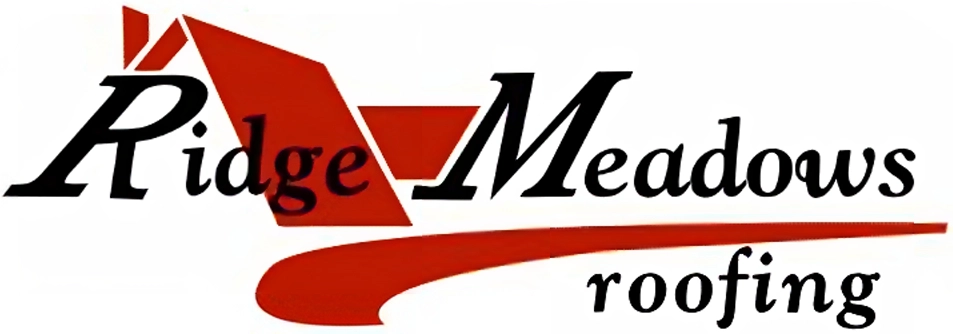Storms across the Lower Mainland and Fraser Valley can be unpredictable, as high winds, heavy rain, and falling branches can all take a toll on residential roofs. Knowing what to do if your home’s shingle roof is damaged in a storm can help you prevent small issues from becoming expensive repairs. Acting quickly, safely, and strategically makes all the difference between temporary inconvenience and long-term structural damage.
Step 1: Inspect the Damage Safely
The first priority after a storm is safety. Before climbing onto the roof, inspect the situation from the ground. Look for shingles scattered around your yard, pieces of flashing, or visible gaps in the roofline. Check the attic or ceilings for signs of leaks: discolouration, dripping, or moisture spots indicate water intrusion.
If the damage appears significant or if there are overhead hazards like hanging branches or downed power lines, it is best to keep a safe distance. Document what you can with photos from the ground, as these will be helpful for both your roofing contractor and insurance provider.
Step 2: Prevent Further Water Intrusion
Once it is safe, the next step is minimizing additional damage. Cover exposed areas with waterproof tarps or heavy plastic sheeting, secured with boards or weights. Even temporary coverage can prevent water from seeping into insulation, drywall, or electrical systems.
Inside the home, place containers under leaks to collect dripping water and move valuables or electronics out of harm’s way. If moisture has entered your home, use fans or dehumidifiers to reduce dampness until professional repairs can begin.
Step 3: Contact a Professional Roofing Contractor
A licensed roofing company should be your next call. Professionals can conduct a full inspection, determine the extent of the storm damage, and provide accurate repair estimates. It is important to note that attempting DIY roof repairs can be risky and may void manufacturer warranties if materials are not installed correctly.
At Ridge Meadows Roofing, our team can quickly assess whether individual shingle replacements will suffice or if a larger repair is needed. We also check underlying structures like the roof deck and flashing to ensure no hidden damage is left unaddressed.
Step 4: Review Insurance Coverage
If the storm was severe, your homeowner’s insurance may cover part or all of the repair costs. Review your policy and contact your insurance provider as soon as possible. Provide the photos and inspection report from your roofer as documentation.
Many insurance companies prefer that a professional inspection is completed before any repairs are made. Having a trusted contractor handle the assessment ensures accurate reporting and smooth communication between all parties.
Step 5: Repair or Replace Damaged Shingles
Depending on the extent of the damage, the solution may involve replacing a few shingles or entire roof sections. Fibreglass laminated shingles, which are popular across British Columbia, are durable but can still loosen or crack under severe wind or hail.
When replacing damaged shingles, ensure matching materials are used to maintain both appearance and performance. Proper alignment, sealing, and nailing patterns are essential to prevent future leaks. If the damage is widespread or your roof is nearing the end of its lifespan, a full replacement may be the most cost-effective option.
Step 6: Check for Secondary Issues
Storm damage does not always stop at the surface. Water can infiltrate underlayment layers or rot roof decking. After initial repairs, have your roofer inspect vents, skylights, gutters, and flashings. Clogged gutters or bent metal flashing can cause slow leaks long after the storm passes. Addressing these smaller issues promptly protects your investment and extends the roof’s overall lifespan.
Step 7: Plan for Preventative Maintenance
Once your roof is repaired, consider scheduling seasonal maintenance to reduce future storm damage. Clearing gutters, trimming overhanging branches, and removing debris helps prevent pooling water and shingle wear.
Regular inspections, especially before and after the storm season, allow you to catch minor problems before they escalate. At Ridge Meadows Roofing, we offer comprehensive maintenance programs tailored to local weather patterns to help homeowners stay ahead of costly repairs.
Count on Ridge Meadows Roofing for Help
Knowing what to do if your shingle roof is damaged in a storm helps protect your home and ensures a faster recovery. The key is acting quickly, prioritizing safety, and working with qualified professionals who understand local materials and conditions.
At Ridge Meadows Roofing, we have built our reputation across the Lower Mainland and Fraser Valley by providing reliable shingle repair and replacement services that last. Whether it is storm restoration, emergency repairs, or long-term roof maintenance, our experts are here to help. Contact us today to schedule an inspection or to request emergency service.

